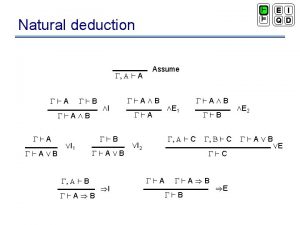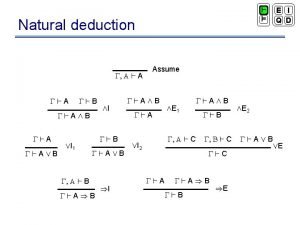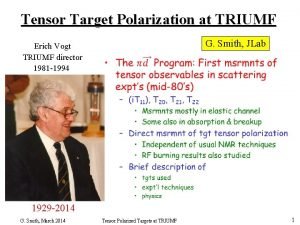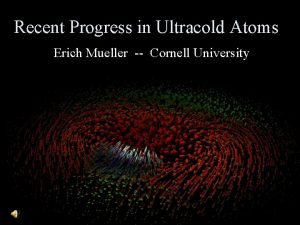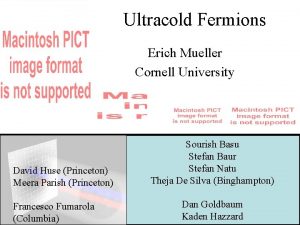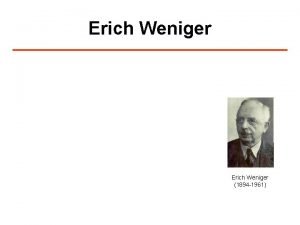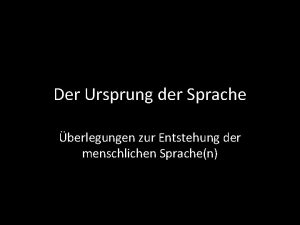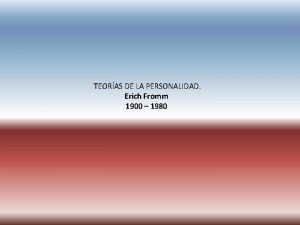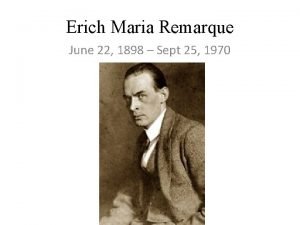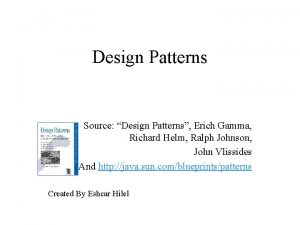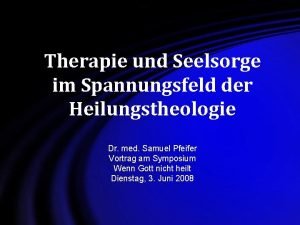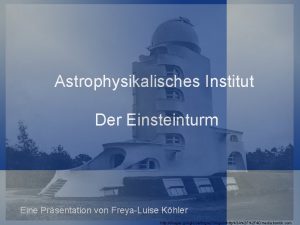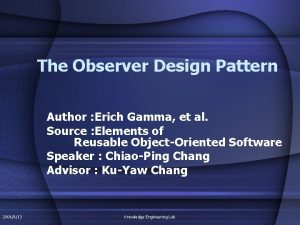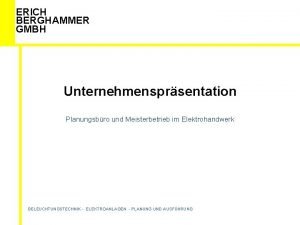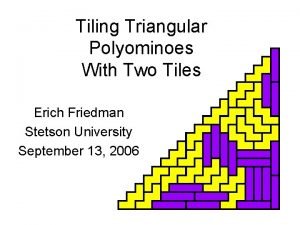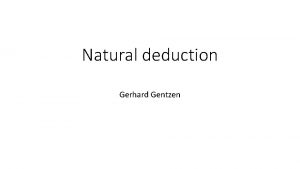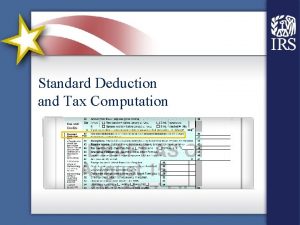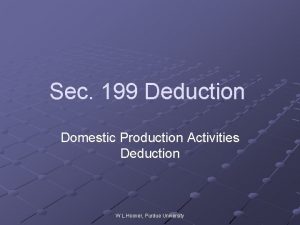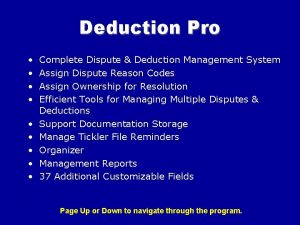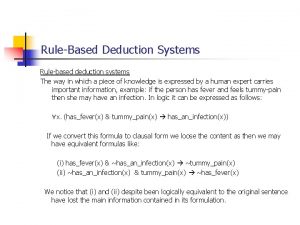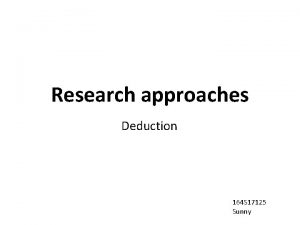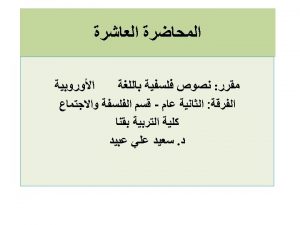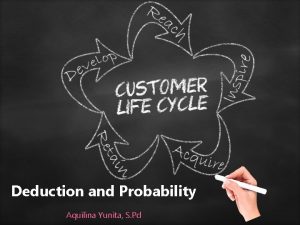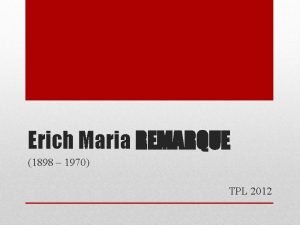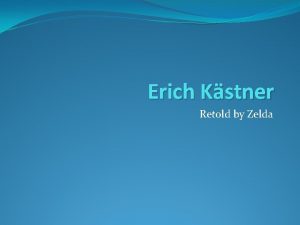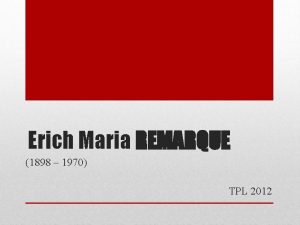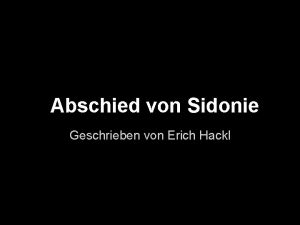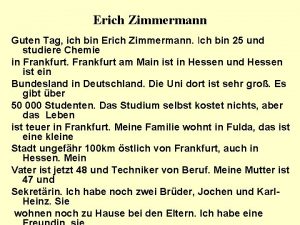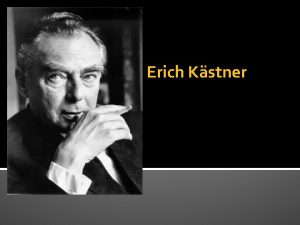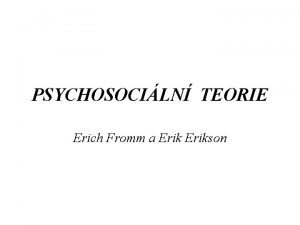Natural deduction Gerhard Gentzen Gerhard Karl Erich Gentzen










![The technique of branch proof from hypotheses Theorem 4: [(p r) (q r)] [(p The technique of branch proof from hypotheses Theorem 4: [(p r) (q r)] [(p](https://slidetodoc.com/presentation_image_h2/d0f31147255c8f3b248123a442ce93f3/image-11.jpg)








![Natural Deduction 4)|– x [A x B x ] [ x A x x Natural Deduction 4)|– x [A x B x ] [ x A x x](https://slidetodoc.com/presentation_image_h2/d0f31147255c8f3b248123a442ce93f3/image-20.jpg)
![Natural Deduction 5) |– x [A B x ] A x. B x , Natural Deduction 5) |– x [A B x ] A x. B x ,](https://slidetodoc.com/presentation_image_h2/d0f31147255c8f3b248123a442ce93f3/image-21.jpg)
![Natural Deduction 5) |– x [A B x ] A x. B x , Natural Deduction 5) |– x [A B x ] A x. B x ,](https://slidetodoc.com/presentation_image_h2/d0f31147255c8f3b248123a442ce93f3/image-22.jpg)

- Slides: 23

Natural deduction Gerhard Gentzen

• Gerhard Karl Erich Gentzen (November 24, 1909 – August 4, 1945) was a German mathematician and logician. He made major contributions to the foundations of mathematics, proof theory, especially on natural deduction and sequent calculus. He died in 1945 after the Second World War, because he was deprived of food after being arrested in Prague.

Natural Deduction Calculus • Axioms: A A, A A • Deduction Rules: • conjunction: A, B |– A B (IC) • disjunction: A B |– A, B A |– A B or B |– A B (EC) (ID) • Implication: A B, A |– B or A B, B |– A B (ED) (II) • equivalence: A B, A |– B A B, B A |– A B (EI) modus ponens (IE) A B |– A B, B A (EE) 3

Natural Deduction Calculus Deduction rules for quantifiers • General quantifier: A x |– x. A x I The rule can be used only if formula A x is not derived from any assumption that would contain variable x as free. x. A x |– A x/t E Formula A x/t is a result of correctly substituting the term t for the variable x. • Existential quantifier A x/t |– x. A x I x. A x |– A x/c E where c is a constant not used in the language as yet. If the rule is used for distinct formulas A’, then a different constant has to be used. A more general form of the rule is: y 1. . . yn x A x, y 1, . . . , yn |– y 1. . . yn A x / f(y 1, . . . , yn), y 1, . . . , yn General E 4

Natural Deduction (notes) 1. In natural deduction calculus an indirect proof is often used. 2. Existential quantifier elimination has to be done in accordance to the rules of Skolemisation in the general resolution method. 3. Rules derivable from the above: • A x B |– x. A x B, x is not free in B • A B x |– A x. B x , x is not free in A • A x B |– x. A x B, x is not free in B • A B x |– A x. B x • A x. B x |– A B x • x. A x B |– A x B 5

Natural Deduction Another useful rules and theorems of propositional logic (try to prove them): Introduction of negation: A |– A IN Elimination of negation: A |– A EN Negation of disjunction: A B |– A B ND Negation of conjunction: A B |– A B NK Negation of implication: A B |– A B NI Tranzitivity of implication: A B, B C |– A C Transpozition: A B |– B A Modus tollens: A B, B |– A TI TR MT 6

Natural Deduction: Examples Theorem 1: A B, B |– A Modus Tollens Proof: 1. A B assumption 2. B assumption 3. A assumption of the indirect proof 4. B MP: 1, 3 contradicts to 2. , hence 5. A Q. E. D 7

Natural Deduction: Examples • Theorem 2: C D |– C D Proof: 1. C D assumption 2. ( C D) assumption of indirect proof 3. ( C D) (C D) de Morgan (see the next example) 4. C D MP 2, 3 5. C EC 4 6. D EC 4 7. D MP 1, 5 contradicts to 6, hence 8. C D (assumption of indirect proof is not true) Q. E. D. 8

Proof of an implicative formula • • If a closed formula F is of an implicative form: A 1 {A 2 [A 3 … (An B) …]} (*) then according to the Theorem of Deduction the formula F can be proved in such a way that the formula B is proved from the assumptions A 1, A 2, A 3, …, An. 9

The technique of branch proof from hypotheses Let the proof sequence contain a disjunction: D 1 D 2 … Dk We introduce hypotheses Di. If a formula F can be proved from every of the hypotheses Di, then F is proved. • Proof (of the validity of branch proof): a) Theorem 4: [(p r) (q r)] [(p q) r] b) The rule II (implication introduction): • • B |– A B 10
![The technique of branch proof from hypotheses Theorem 4 p r q r p The technique of branch proof from hypotheses Theorem 4: [(p r) (q r)] [(p](https://slidetodoc.com/presentation_image_h2/d0f31147255c8f3b248123a442ce93f3/image-11.jpg)
The technique of branch proof from hypotheses Theorem 4: [(p r) (q r)] [(p q) r] 1. [(p r) (q r)] assumption 2. (p r) EK: 1 3. (q r) EK: 1 4. p q assumption 5. (p r) ( p r) Theorem 2 6. p r MP: 2. 5. 7. r assumption of the indirect proof 8. p ED: 6. 7. 9. q ED: 4. 8. 10. r MP: 3. 9. – contra 7. , hence 11. r Q. E. D 11

The technique of branch proof from hypotheses Theorem 3: ( A B) (A B) de Morgan law Proof: 1. ( A B) assumption 2. A B assumption of the indirect proof 3. A EC 1. 4. B EC 1. 5. 1. A hypothesis: contradicts to 3 5. 2. B hypothesis: contradicts to 4. 5. A (A B) II 6. B (A B) II 7. [A (A B)] [B (A B)] IC 5, 6 8. (A B) Theorem 4 9. (A B) MP 2, 8: Q. E. D. 12

Natural Deduction: examples Theorem 5: A C, B C |– (A B) C Proof: 1. A C assumption 2. A C Theorem 2 3. B C assumption 4. B C Theorem 2 5. A B assumption 6. C assumption of indirect proof 7. B ED 4, 6 8. A ED 2, 6 9. A B IC 7, 8 10. ( A B) (A B) Theorem 3 (de Morgan) 11. (A B) MP 9, 10 contradicts to 5. , hence 12. C (assumption of indirect proof is not true) Q. E. D. 13

Natural Deduction: examples Some proofs of FOPL theorems 1) |– x [A x B x ] [ x. A x x. B x ] Proof: 1. x [A x B x ] assumption 2. x A x assumption 3. A x B x E : 1 4. A x E : 2 5. B x MP: 3, 4 6. x. B x I : 5 Q. E. D. 14

Natural Deduction: examples • • • According to the Deduction Theorem we prove theorems in the form of implication by means of the proof of consequent from antecedent: x [A x B x ] |– [ x. A x x. B x ] iff x [A x B x ], x. A x |– x. B x 15

Natural Deduction: examples 2) |– x A x Proof: : 1. x A x 2. x A x 3. 1. A x 3. 2. x A x 4. A x x A x 5. A x 6. x A x : 1. x A x 2. x A x 3. A c) 4. A c (De Morgan rule) assumption of indirect proof hypothesis I : 3. 1 II: 3. 1, 3. 2 MT: 4, 2 Z : 5 contradicts to: 1 Q. E. D. assumption of indirect proof E : 1 E : 2 contradicts to: 3 Q. E. D. 16

Natural Deduction: examples • Note: In the proof sequence we can introduce a hypothetical assumption H (in this case 3. 1. ) and derive conclusion C from this hypothetical assumption H (in this case 3. 2. ). As a regular proof step we can then introduce implication H C (step 4. ). • According to the Theorem of Deduction this theorem corresponds to two rules of deduction: x A x |– x A x 17

Natural Deduction: examples 3) |– x A x (De Morgan rule) Proof: : 1. x A x assumption 2. 1. A x hypothesis 2. 2. x A x Z : 2. 1 3. A x x A x ZI: 2. 1, 2. 2 4. A x MT: 3, 1 5. x A x Z : 4 Q. E. D. : 1. x A x assumption 2. x A x assumption of indirect proof 3. A c) E : 2 4. A c E : 1 contradictss to: 3 Q. E. D. • According to the Theorem of Deduction this theorem (3) corresponds to two rules of deduction: x A x |– x A x , x A x |– x A x 18

Existential quantifier elimination Note: In the second part of the proofs ad (2) and (3) the rule of existential quantifier elimination (E ) has been used. This rule is not truth preserving: the formula x A(x) A(c) is not logically valid (cf. Skolem rule in the resolution method: the rule is satifiability preserving). There are two ways of its using correctly: • In an indirect proof (satisfiability!) • As a an intermediate step that is followed by Introducing again • The proofs ad (2) and (3) are examples of the former (indirect proofs). The following proof is an example of the latter: 19
![Natural Deduction 4 x A x B x x A x x Natural Deduction 4)|– x [A x B x ] [ x A x x](https://slidetodoc.com/presentation_image_h2/d0f31147255c8f3b248123a442ce93f3/image-20.jpg)
Natural Deduction 4)|– x [A x B x ] [ x A x x B x ] Proof: 1. x [A x B x ] assumption 2. x. A x assumption 3. A a E : 2 4. A a B a E : 1 5. B a MP: 3, 4 6. x. B x I : 5 Q. E. D. Note: this is another example of a correct using the rule E. 20
![Natural Deduction 5 x A B x A x B x Natural Deduction 5) |– x [A B x ] A x. B x ,](https://slidetodoc.com/presentation_image_h2/d0f31147255c8f3b248123a442ce93f3/image-21.jpg)
Natural Deduction 5) |– x [A B x ] A x. B x , where A does not contain variable x free Proof: : 1. x [A B x ] assumption 2. A B x E : 1 3. A A axiom 3. 1. A 1. hypothesis 3. 2. A x. B x ZD: 3. 1 4. 1. A 2. hypothesis 4. 2. B x ED: 2, 4. 1 4. 3. x. B x I : 4. 2 4. 4. A x. B x ID: 4. 3. 5. [A (A x. B x )] [ A (A x. B x )] II + IC 6. (A A) (A x. B x ) theorem + MP 5 7. A x. B x MP 6, 2 Q. E. D. 21
![Natural Deduction 5 x A B x A x B x Natural Deduction 5) |– x [A B x ] A x. B x ,](https://slidetodoc.com/presentation_image_h2/d0f31147255c8f3b248123a442ce93f3/image-22.jpg)
Natural Deduction 5) |– x [A B x ] A x. B x , where A does not contain variable x free Proof: : 1. A x. B x Assumption, disjunction of hypotheses 2. 1. A 1. hypothesis 2. 2. A B x ID: 2. 1 2. 3. x [A B x ] I : 2. 2 3. A x [A B x ] 4. 1. x. B x 2. hypothesis 4. 2. B x E : 3. 1 4. 3. A B x ID: 3. 2 4. 4. x [A B x ] I : 3. 3 5. x. B x x [A B x ] II 4. 1. , 4. 4. 6. [A x. B x ] x [A B x ] Theorem, IC, MP – 3, 5 7. x [A B x ] MP 1, 6 Q. E. D. 22

Natural Deduction 6) |– A(x) B x. A(x) B Proof: 1. A(x) B assumption 2. x. A(x) assumption 3. A(x) E : 2 5. B MP: 1, 2 Q. E. D. This theorem corresponds to the rule: A(x) B |– x. A(x) B 23
 Natural deduction cheat sheet
Natural deduction cheat sheet Natural deduction cheat sheet
Natural deduction cheat sheet Erich vogt
Erich vogt Erich mueller cornell
Erich mueller cornell Primal pictures
Primal pictures Erich strohmaier
Erich strohmaier Insan evrenin hilkat garibesidir
Insan evrenin hilkat garibesidir Erich fried biographie
Erich fried biographie David huse princeton
David huse princeton Erich weniger
Erich weniger Arti cinta kasih
Arti cinta kasih Erich fried ein hund der stirbt
Erich fried ein hund der stirbt Personalidad erich fromm
Personalidad erich fromm Remarque literarne obdobie
Remarque literarne obdobie Erich maria remarque sister
Erich maria remarque sister Design patterns erich gamma
Design patterns erich gamma Toolsofbondage
Toolsofbondage Erich maria remarque současníci
Erich maria remarque současníci Paul remark
Paul remark Erich mendelsohn einsteinturm
Erich mendelsohn einsteinturm Erich vogt
Erich vogt Erich gamma
Erich gamma Erich berghammer
Erich berghammer Erich friedman
Erich friedman
